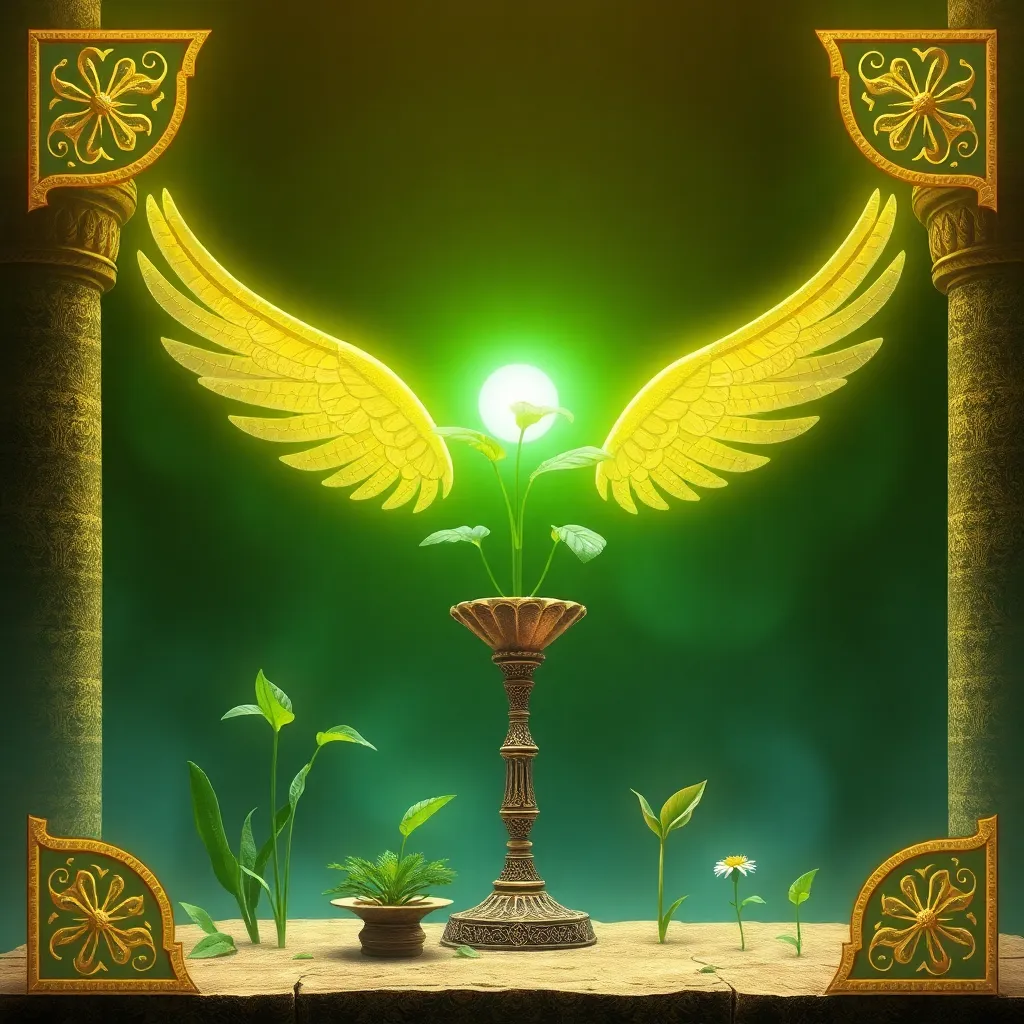Sacred Herbs: The Botanical Guardians of the Afterlife
I. Introduction
Sacred herbs have long held a significant place in the spiritual and cultural practices of many civilizations. These plants, often revered for their unique properties and uses, are seen as essential components in the transition from life to the afterlife. This article delves into the historical significance of sacred herbs, particularly in relation to the afterlife, examining their roles in ancient rituals, cultural perspectives, and modern interpretations.
II. Historical Context of Sacred Herbs
Throughout history, ancient civilizations have developed rich beliefs surrounding the afterlife, often incorporating sacred herbs into their practices. These plants were not only valued for their physical properties but also for their spiritual significance.
A. Ancient civilizations and their beliefs about the afterlife
In ancient Egypt, for instance, the afterlife was viewed as a continuation of one’s earthly journey, requiring proper preparation through rituals and offerings. Sacred herbs played a crucial role in these preparations, believed to aid in the spiritual journey of the deceased.
B. The role of herbs in burial rites and funerary practices
- Herbs were often placed in tombs to provide comfort and protection to the deceased.
- They were used in embalming processes to preserve the body and ward off decay.
- Many cultures burned sacred herbs during funeral rites to purify the space and facilitate the soul’s transition.
C. Notable sacred herbs used throughout history
Some of the most prominent sacred herbs include:
- Frankincense
- Myrrh
- Sage
- Cedar
- Lotus
III. Cultural Perspectives on Sacred Herbs
The significance of sacred herbs extends beyond ancient Egypt, permeating various cultures and traditions around the world.
A. The significance of sacred herbs in various cultures
- Egyptian traditions: Herbs like myrrh and frankincense were integral in the mummification process and were believed to help the soul navigate the afterlife.
- Indigenous practices: Many indigenous cultures use herbs in rituals to honor ancestors and facilitate communication with the spirit world.
- Eastern philosophies: In traditions such as Buddhism and Hinduism, herbs are used in rituals and meditative practices, emphasizing their spiritual and healing properties.
B. Common themes and variations among cultures
Despite the variations in practices, common themes emerge, including the use of herbs for purification, the honoring of ancestors, and the facilitation of spiritual journeys. These shared beliefs highlight the universal human connection to the natural world and the afterlife.
IV. Notable Sacred Herbs and Their Uses
Several sacred herbs have gained prominence due to their unique properties and historical significance.
A. Overview of specific herbs associated with the afterlife
- Frankincense: Traditionally used in incense, it is known for its calming and purifying properties.
- Myrrh: Often used in embalming, it symbolizes preservation and protection in the afterlife.
- Sage: Used for cleansing rituals, sage is believed to ward off negative energies and promote spiritual clarity.
B. Medicinal and spiritual properties attributed to these herbs
These herbs are not only revered for their spiritual significance but also for their medicinal properties, which include:
- Anti-inflammatory effects
- Antimicrobial properties
- Relaxation and stress relief
V. The Symbolism of Sacred Herbs
Understanding the symbolism of sacred herbs can deepen our appreciation for their roles in rituals and ceremonies.
A. Understanding the metaphysical properties of herbs
Herbs are often seen as conduits between the physical and spiritual realms. Their unique properties allow them to serve as tools for meditation, healing, and spiritual connection.
B. The symbolism of herbs in rituals and ceremonies
In various cultures, the act of burning or using sacred herbs in rituals symbolizes purification, protection, and the invocation of divine presence.
C. How these symbols relate to concepts of life and death
The use of sacred herbs in the context of life and death underscores the belief in continuity and transformation, representing a cycle rather than an end.
VI. Modern Interpretations and Practices
In recent years, there has been a resurgence of interest in sacred herbs and their applications in contemporary spiritual practices.
A. The revival of interest in sacred herbs today
As more people seek holistic and natural approaches to spirituality and wellness, sacred herbs are being reintroduced into rituals, healing practices, and daily life.
B. Integration of sacred herbs in contemporary spiritual practices
Many individuals and communities are incorporating sacred herbs into meditation, yoga, and wellness routines, recognizing their historical significance and benefits.
C. The role of herbalism in modern wellness and afterlife beliefs
Herbalism continues to thrive as a means of promoting physical and spiritual well-being, with many practitioners emphasizing the importance of maintaining connections to ancient wisdom.
VII. The Future of Sacred Herbs
As we look to the future, several factors will influence the role of sacred herbs in society.
A. Ongoing research and discoveries in ethnobotany
Ethnobotany—the study of how people use plants—continues to uncover the diverse applications and significance of sacred herbs across cultures.
B. The impact of globalization on the preservation of sacred herb traditions
Globalization presents both challenges and opportunities for the preservation of sacred herb traditions, as knowledge and practices are shared and adapted.
C. Environmental considerations and sustainability of sacred herbs
With increasing awareness of environmental issues, sustainable practices in the cultivation and use of sacred herbs are becoming essential to ensure their preservation for future generations.
VIII. Conclusion
Sacred herbs have served as botanical guardians of the afterlife, revered across cultures for their spiritual and medicinal properties. As we explore and respect these traditions, we are reminded of the deep connections between nature, spirituality, and the human experience. We encourage readers to further explore and engage with the practices surrounding sacred herbs, fostering a greater appreciation for their historical and contemporary significance.




